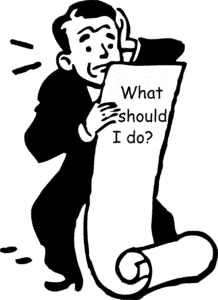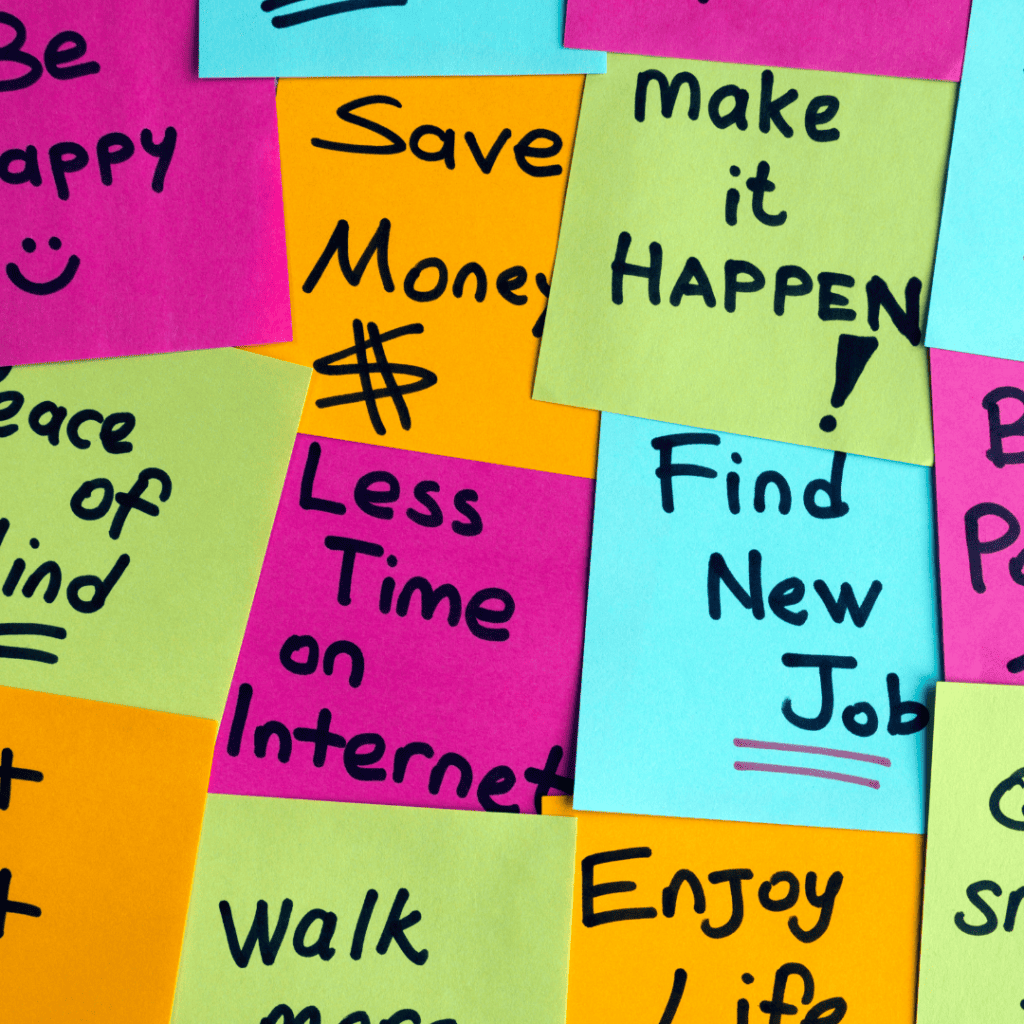How To Overcome Task Paralysis And Get Things Done
Have you ever started a day with a list of things to do as long as your arm? Looking at the list, feeling overwhelmed, wondering how you would complete everything?
At times, we all experience this stuck feeling or, as it’s called, task paralysis. We feel blocked from making progress and, sometimes, don’t even know what’s causing it. Having a long to-do list can be immensely frustrating, and finding yourself powerless to start.
Table of Contents
Task Paralysis
As your to-do list grows, your brain may perceive it as a threat. In times of danger, the natural human reaction is to run from the proverbial saber-toothed tiger for survival.
Why is it that the more work you have to do, the less able or motivated you are to actually do it? This phenomenon, task paralysis, often strikes when you have a dozen things on your plate, all vying for your attention. Or, it appears when you have one giant task in front of you, that’s incredibly important, but you’re stuck on how to get started.
Rather than logically addressing each item on your list or making progress toward the massive project, our brain shuts down.
Getting Over Task Paralysis
Task paralysis may emerge when considering a potentially risky or behemoth task. Ellen Hendriksen, a clinical assistant professor at Boston University’s Center for Anxiety and Related Disorders, explains it this way. She says, “Our bodies react to threat the same way, whether the threat is external, like the proverbial saber-toothed tiger, or the threat is internal.
She continues, “With a big overwhelming task list, that threat could be the threat of failure, or it could be the threat of letting others down. It could be the threat of feeling stupid or incompetent because we don’t know where to start or how to do things.”
And, for perfectionists, this feeling of overwhelm may be amplified. If we associate ourselves heavily with our outcomes having very high standards, then what must be done becomes overly stressful.
At times of higher stress levels, the prefrontal cortex (the region responsible for planning, self-control and decision-making) struggles to control less emotional parts of the brain. Recognizing the danger, the amygdala may take over, creating task avoidance.

A Few Tips
A few tips can bring back an individual’s power center and help us be capable of moving forward. Let’s take a look at what they might be.
Take A Deep Breath. To regain executive function, begin by lowering the stress level in your body. To do so, take a few deep breaths, which should reduce cortisol, one of the critical hormones associated with stress.
Make Very Simple, Small Steps. If you’re overwhelmed by a daunting task, try breaking it down into simple, easy-to-accomplish smaller steps. It’s like that old saying: ‘How do you eat an elephant? With ketchup and one bite at a time.’
These steps must be minuscule. Anything you do should not cause resistance in any way, and completing the task should provide a sense of accomplishment.
You have to make concrete plans for the steps you need to take, with a specified time, place and duration so you can get everything done.
To help ease perfectionistic anxieties, tell yourself it’s OK if you don’t do well; you can always come back and improve later. Think about how many mistakes or redoes you’ll allow yourself.
First, take a tiny step in the right direction because the task itself often prevents you from doing it because it may seem like too much work. As you begin the job, it becomes more doable, and you may even start to feel that it’s not as challenging as you anticipated.

Reward Completed Tasks. For example, if there’s a call that you’ve been avoiding (and avoiding and avoiding), promise yourself five minutes of social media afterward as a treat. You can also combine a task you don’t like with one you enjoy; try chair yoga during your phone call to your medical provider.
Start With Something Fun. Often, we are so focused on the should that we overlook the want. Beginning with the easiest task can give an extra boost of motivation. Or, look at your list strategically when you have a lot of small items to complete. It may be a good idea to start with the most enjoyable task just to get things moving.
Start With Something Fun. Often, we are so focused on the should that we overlook the want. Beginning with the easiest task can give an extra boost of motivation. Or, look at your list strategically when you have a lot of small items to complete. It may be a good idea to start with the most enjoyable task just to get things moving.
Think About Others Needs First. Considering what is important to others can also be a good starting point. If you feel overwhelmed, ask yourself how completing this task makes another person’s life easier.
Be A Good Time Manager. Utilize time management techniques to keep you on track. Set time limits to finish a big overwhelming task list, for example, setting deadlines and arranging tasks into smaller pieces.
Ask For Help. Ask somebody else to assist you if you can’t finish everything before the deadline. Find someone willing to take something off your list in exchange for your help when they need it.

Just Do It
Before you start:
- Focus on the work by creating a distraction-free environment.
- Put your phone away, clear your desk, and give yourself a 30-minute timer (or longer if you’re feeling ambitious).
- Inform everyone around you — including yourself — that you won’t be disturbed during this time.
That includes no breaks for snacks, texts, or household chores.
Procrastination Is A Type Of Task Paralysis
You don’t want to let task paralysis morph into a form of procrastination – when you participate in something simple and enjoyable yet unproductive long-term instead of completing the challenging task. This is because temptations are always close, making them easier to put off.
By avoiding tasks that make you feel anxious, you not only don’t complete the task at hand, but it conditions your brain to expect the same amount of anxiety each time. This perpetuates mental paralysis.
When we avoid something, it strengthens these beliefs instead of allowing us to prove them wrong. The trick is to work through the fear of failure and show yourself that you are still in control; this helps build self-confidence and good habits for when your work needs to be done.

Task Frustration
This is “task paralysis,” – a frustrating state that is often caused by one of three things:
- A long and intimidating to-do list.
- Your list includes things that are not tasks.
- It is impossible to move forward because your tasks are misaligned.
To combat this, look at the big picture and break up your long list into manageable chunks, eliminate any tasks that are not actually tasks, and then reorder your tasks for maximum efficiency.
The first step is creating an action plan outlining specific steps to tackle each item on the to-do list. This can be as simple as breaking tasks into smaller, more manageable pieces or setting deadlines to create a sense of urgency. It’s essential to prioritize the most urgent or important tasks first and delegate others that can be handled by someone else.
This way, you can switch from “going nowhere” to “moving forward.”

The Long And Overwhelming To-Do List
If you are staring at an overwhelming to-do list, take a good look and sift through it. Choose the three most important jobs that need to be accomplished today to advance or move forward and put them at the top of your to-do list. Arrange the remaining tasks from most to least important, deciding if any must be completed today or adding due dates to other important tasks.
The items that remain should be considered a new list. If something doesn’t work out, reschedule or remove it from consideration. With your plans for the day, you can now confidently make real progress.
Is It A Task Or A Project
Review your list of tasks and determine if it requires multiple steps. For example, if “clean kitchen” is on your list, it would require more than one task: sweeping the floor, tidying the fridge, washing dishes, and removing the garbage.
These can’t be classified as tasks alone – now they are projects. You need to create another list for these more oversized items and break them into smaller, individual tasks that make up that big project.
Go ahead if you want to work on those projects in addition to your original task list. Differentiating between tasks and projects helps with clarity, enabling productivity.
Misaligned Tasks
Next, consider your dreams, goals and surroundings. Scan through your to-do list. Are there items on your list that you can tackle with what you have right now where you are, or could they be done at a future date?
The ones that are aligned with who you are right now and what you are trying to accomplish? If what is on your list aligns differently from who you are and where you are going, they are misaligned with your current situation.
Create a third list for these items. This will keep them documented for future review. And truthfully, you may never get to any of the tasks on this list, but it is essential to have this visual reminder that you at least consider them in case they need to be reviewed. The truth is that if nothing is done from this list, it will eventually just fade away.
In Summary
In general, task paralysis does not last forever. With a thoughtful approach to your tasks, you can overcome it. A rational strategy and action plan for tackling the tasks, regardless of if you are overwhelmed or otherwise, will make task paralysis an infrequent occurrence.
Take the messy house example. Keeping up with daily tasks to keep your home clean every day would be one of the best ways to spend less time and not experience a sense of dread with that particular task on your weekend or day off.
Putting in the effort on the front end will lessen the time you confront workload paralysis (among other matters). This way, you’ll move forward rather than head in various directions – or, as might be when dealing with task paralysis – avoid making progress.
The Good News? You are in charge. Taking that single step is a great way to make a conscious decision and set realistic expectations for your time. You will find a renewed sense of purpose and confidence as you work through your list with this better understanding of how to overcome task paralysis and get things done.
Cheers to your next adventure!
Hi, I’m Kirsti and I want to help you find new places to explore.
My blog, Kirsti Out Wandering, is a guide for unique experiences. I explore less popular areas to uncover a destination’s culture and hidden potential.
From the perspective of a curious wanderer and photographer, I seek the potential rather than the obvious.
I hope you will wander along with me!



